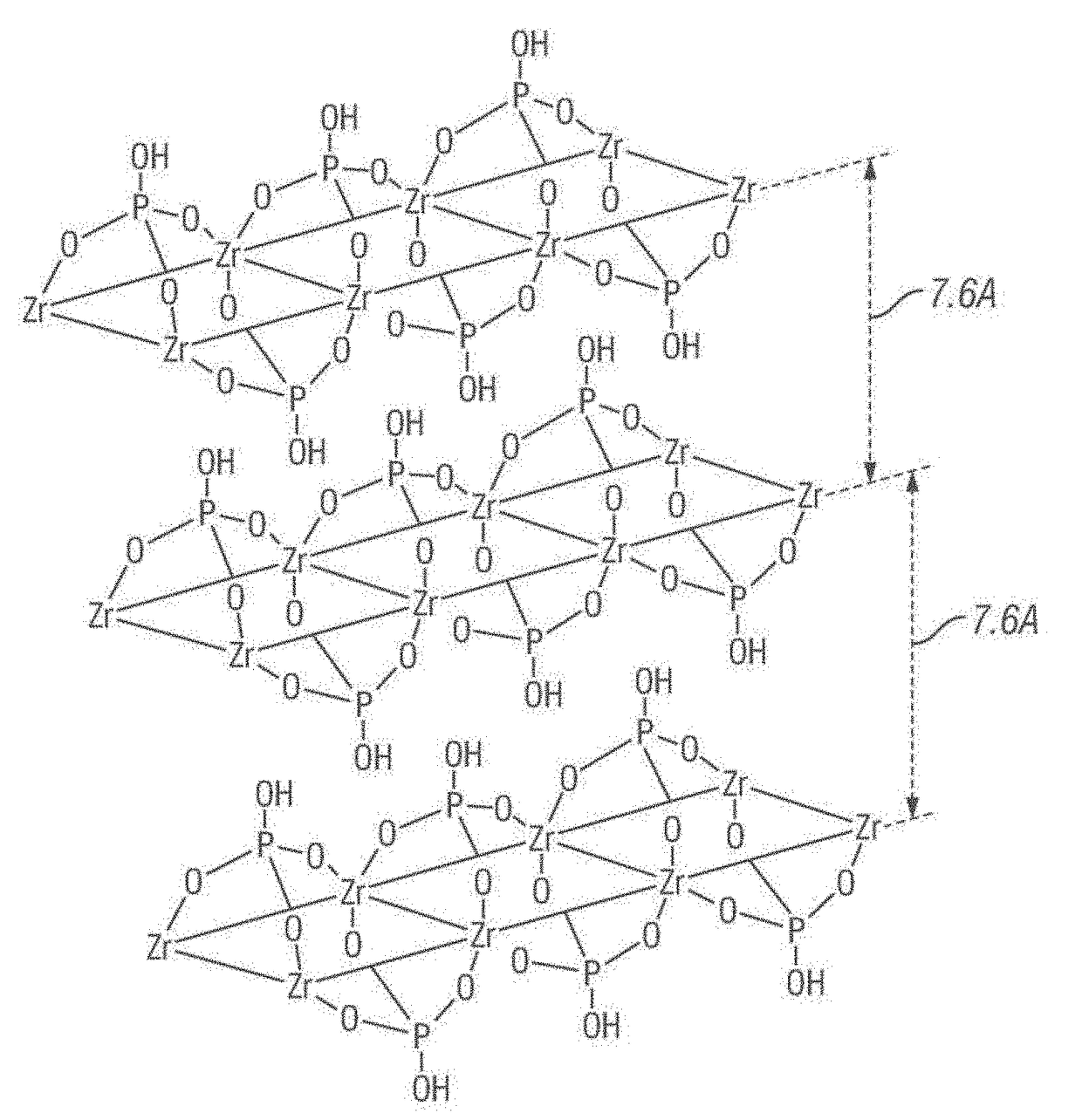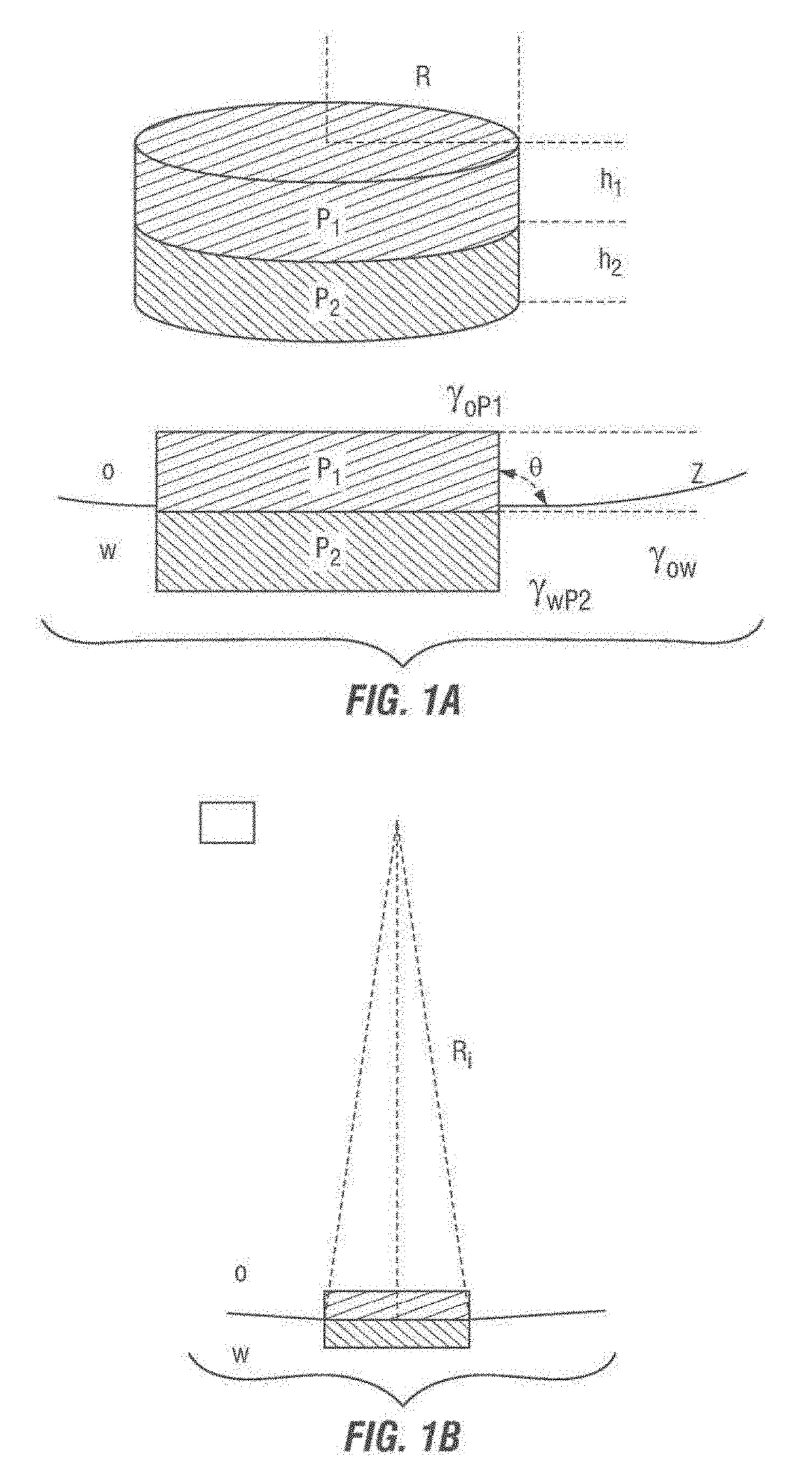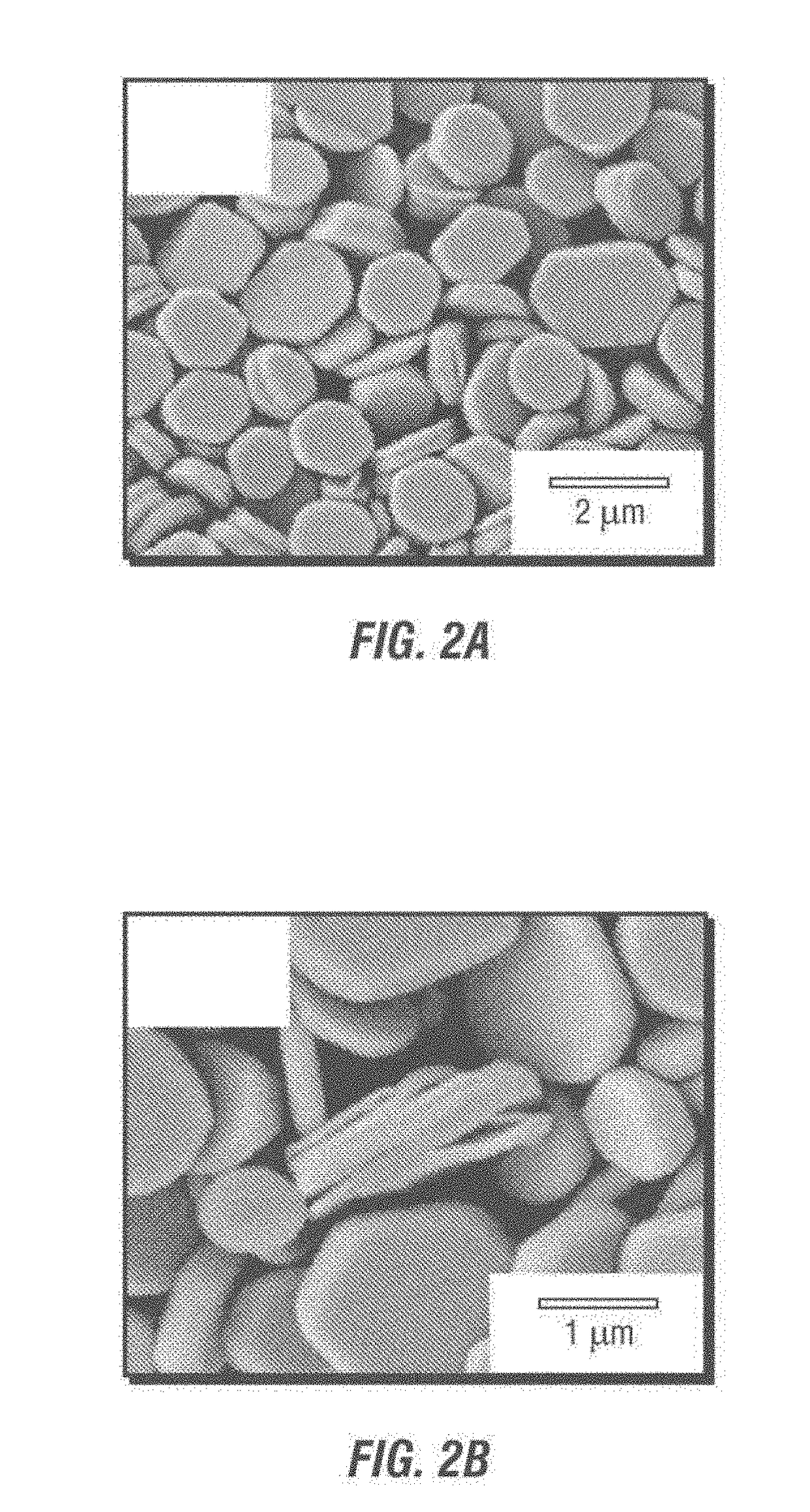Amphiphilic nanosheets and methods of making the same
- Summary
- Abstract
- Description
- Claims
- Application Information
AI Technical Summary
Benefits of technology
Problems solved by technology
Method used
Image
Examples
example 1
Grafting and Exfoliation of α-ZrP
[0078]α-ZrP is characterized by a strong hydrophilicity. Hence, chemical modification is required to convert it to become hydrophobic. First, a coupling agent is grafted over the exposed edges and flat surfaces of the α-ZrP crystals. See FIG. 3 (grafting step). Subsequently, via the exfoliation of these crystals, a mixture of thin-surface and edge-modified amphiphilic nanosheets are obtained from the outer and the inner layers, respectively. See FIG. 3 (exfoliation step) and FIGS. 4A-4D (showing the transmission electron microscope (TEM) images of the α-ZrP nanosheets).
[0079]As shown in FIGS. 4A-4D, the α-ZrP nanosheets are thin and flexible, and can present wrinkles, as shown in FIGS. 4B and 4C. This demonstrates that the nanosheets can bend on the oil-water interface to stabilize the emulsions. It has been proven that the single nano-plate layer is rigid when the nanosheet size is about several tenths of a nanometer or less and becomes flexible whe...
example 2
Synthesis and Functionalization of α-ZrPs
[0083]The synthesis of the highly crystalline α-ZrP by the hydrothermal method has been described by Sun et al. Sun, L. Y.; Boo, W. J.; Sue, H. J.; Clearfield, A. New J. Chem. 2007, 31, 39. Particularly, 6 g ZrOCl28H2O were mixed with 60 mL (9 M) H3PO4 and heated at 200° C. for 24 hours in a high-pressure autoclave. After the reaction, the product was centrifuged and washed three times with deionized (DI) H2O and dried overnight at 60° C. The dried product was ground with a mortar and pestle into a fine powder. Highly crystalline α-ZrP was used to avoid the intercalation of the modifier in the surface and edge modification step. Finally, the crystals were reacted with octadecyl isocyanate (Aldrich, 98%) in a 1:10 (ODI:ZrP) molar ratio at 65° C., using o-xylene as a solvent, for 12 hours under nitrogen. The resulting product was washed with methanol three times and dried at 60° C. overnight in an oven.
example 3
Characterization of the Modified α-ZrPs
[0084]The resulting powder was characterized by Fourier transform infrared (FTIR, Shimadzu IRAffinity-1 spectrometer in an ATR, attenuated total reflection mode with a ZnSe ATR Prism Model Pike MIRacle A, Columbia, Md.) and thermogravimetric analysis (TGA, Q500 TA Instrument, New Castle, Del.). AFM images were collected with an Agilent / Molecular Imaging PicoSPM coupled with an RHK Technology SPM 1000 Electronics Revision 8, and X-ray photoelectron spectroscopy (XPS, Kratos Axis Ultra Imaging, Chestnut Ridge, N.Y.) to analyze the elementary composition of the final compound.
Fourier Transform Infrared Spectroscopy (FTIR)
[0085]The grafting reactions (i.e., the outer surface modification reactions) were analyzed by Fourier transform infrared spectroscopy (FTIR). See FIG. 7. The FTIR spectrum of pristine α-ZrP is shown in Graph 1 of FIG. 7. Applicants observed that the isocyanate band (—N═C═O) at 2260 cm−1 (shown in FIG. 7, Graph 2) vanished after r...
PUM
| Property | Measurement | Unit |
|---|---|---|
| Thickness | aaaaa | aaaaa |
| Thickness | aaaaa | aaaaa |
| Diameter | aaaaa | aaaaa |
Abstract
Description
Claims
Application Information
 Login to View More
Login to View More - R&D
- Intellectual Property
- Life Sciences
- Materials
- Tech Scout
- Unparalleled Data Quality
- Higher Quality Content
- 60% Fewer Hallucinations
Browse by: Latest US Patents, China's latest patents, Technical Efficacy Thesaurus, Application Domain, Technology Topic, Popular Technical Reports.
© 2025 PatSnap. All rights reserved.Legal|Privacy policy|Modern Slavery Act Transparency Statement|Sitemap|About US| Contact US: help@patsnap.com



